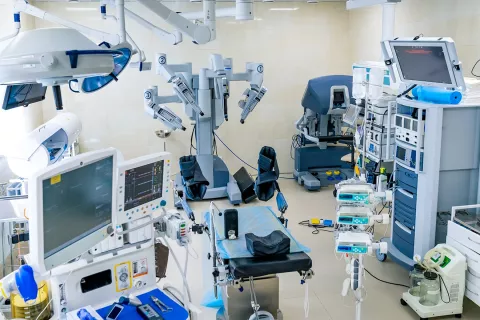
The Unique Device Identification (UDI) system is an international standard that assigns a unique code to each medical device to improve patient safety and streamline product tracking and recall. In China, the National Medical Products Administration (NMPA) has implemented UDI guidelines and regulations for medical devices to enhance safety and quality control.
Overview of UDI in China
In China, the Rules for Unique Identification System for Medical Devices were issued by the NMPA in 2019. The rules suggest medical devices have a unique identification code to improve product traceability, enhance post-market supervision, and strengthen the management of medical device recalls.
In 2019, the NMPA issued the Pilot Work Plan for Medical Device Unique Identification System, which established a phased approach implementing the unique identification system for medical devices. The pilot work plan was designed to test the feasibility of the unique identification system and identify potential issues before nationwide deployment.
The Pilot Work Plan Included the Following Phases
Phase 1: From 2019 to 2020, the pilot work plan focused on the part Class III medical devices, which are considered high-risk. The pilot was conducted in selected regions and hospitals to test the unique identification code application and scanning process, as well as product registration and database management.
Phase 2: Since January 1, 2021, part Class III medical devices listed in the catalog must have a UDI. Manufacturers should apply for the UDI and finish it before January 1, 2021.
Phase 3: Since June 1, 2022, all Class III medical devices must have a UDI. Manufacturers should apply for the UDI and finish it before June 1, 2022.
Phase 4: From June 1, 2024, part Class II medical devices listed in the catalog must have a UDI. Manufacturers should apply for the UDI and finish it before June 1, 2024.
The deployment of the Pilot Work Plan for a Medical Device Unique Identification System in China is expected to enhance the management and supervision of medical devices, improve Post-market Surveillance (PMS), and enhance patient safety. The implementation of the unique identification system for medical devices will also align China with international standards, such as the Unique Device Identification (UDI) system established by the International Medical Device Regulators Forum (IMDRF).
Key Requirements of UDI Implementation in China
- Device Identification: Each medical device must have a Unique Device Identifier (UDI) assigned to it, which includes a Device Identifier (DI) and a Production Identifier (PI). The DI is a static code that identifies the manufacturer, device type, and other information. The PI is a dynamic code that identifies the batch or serial number and expiration date.
- Labeling: Manufacturers must include the UDI on the device label and packaging in both human-readable and machine-readable formats. The label must also include other required information, such as device name, manufacturer name and address, and country of origin.
- Database Registration: The UDI information must be registered in the NMPA's medical device registration database. The registration process includes the submission of UDI data, labeling information, and other documentation.
- Compliance Timelines: The UDI implementation timeline is based on device classification.
Impact of UDI Implementation in China
UDI implementation in China is expected to improve patient safety, streamline product tracking and recall, and enhance supply chain management. By enabling more efficient and accurate tracking of medical devices throughout their life cycle, UDI implementation can help reduce the risk of counterfeit products, improve device traceability, and support faster and more effective product recalls in the event of safety issues.
The UDI guidelines and regulations for medical devices in China demonstrate the NMPA's commitment to improving safety and quality control in the medical device industry. Device manufacturers and importers should work closely with Regulatory consultants or legal representatives to ensure compliance with UDI requirements and timelines to avoid delays in market entry and product distribution.
To learn more about the latest medical device UDI requirements in China, reach out to our Regulatory expert. Stay informed. Stay compliant.









